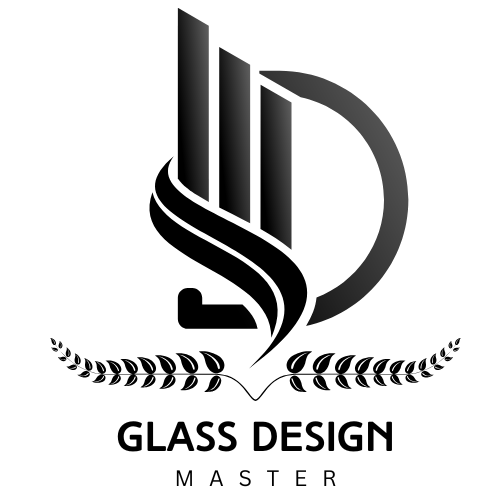Laminated glass has become a cornerstone in modern architecture and design, offering a blend of safety, functionality, and aesthetic appeal. Comprising two or more glass layers bonded with an interlayer, typically polyvinyl butyral (PVB), laminated glass holds together when shattered, enhancing safety and security. Beyond its protective qualities, recent innovations have expanded its applications, making it a preferred choice for designers and architects.

Types of Laminated Glass Design
Laminated glass comes in various types, each designed for specific applications based on safety, functionality, and aesthetics. Here are the main types of laminated glass:
1. Standard Laminated Glass
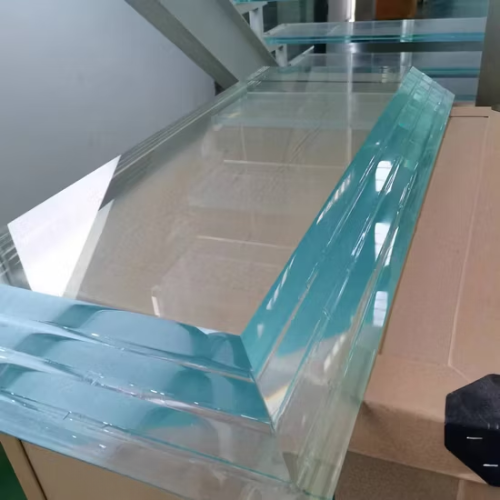
This is the most common type, made with two glass layers bonded with a polyvinyl butyral (PVB) or ethylene-vinyl acetate (EVA) interlayer. It is widely used in windows, doors, and windshields due to its safety, soundproofing, and UV protection properties.
2. Acoustic Laminated Glass
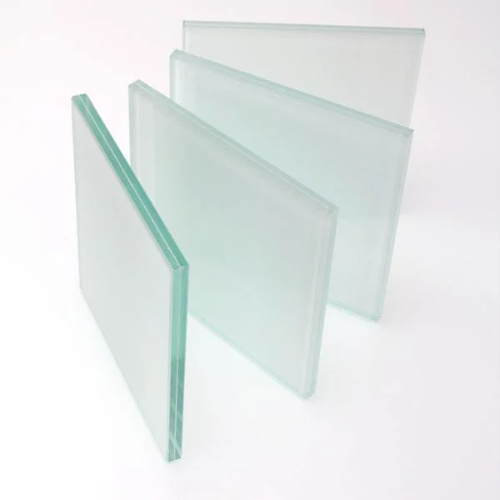
Designed for superior noise reduction, this type uses a specialized interlayer that minimizes sound transmission. It is ideal for offices, airports, and homes near busy roads, reducing external noise pollution.
3. Tempered Laminated Glass

A combination of tempered glass and laminated glass, this type offers high impact resistance and shatterproof properties. It is used in areas requiring extra safety, such as skylights, glass floors, and hurricane-resistant windows.
4. Bulletproof Laminated Glass
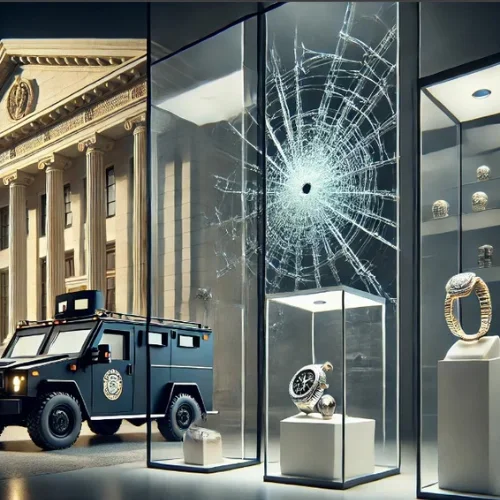
Made by bonding multiple layers of glass and interlayers, bulletproof laminated glass is used in banks, military buildings, and VIP vehicles. It provides high-level security by absorbing the impact of bullets and preventing penetration.
5. Smart Laminated Glass
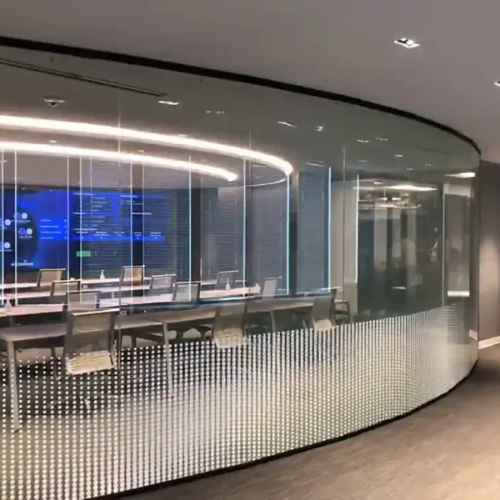
Also known as switchable glass, this type changes from transparent to opaque using electrochromic or PDLC (Polymer Dispersed Liquid Crystal) technology. It is used in offices, conference rooms, luxury homes, and hospitals for privacy and energy efficiency.
6. Colored or Tinted Laminated Glass

This glass type features colorful interlayers, offering decorative and aesthetic appeal while still providing UV protection and privacy. It is commonly used in architectural facades, interior partitions, and decorative glass elements.
7. Fire-Resistant Laminated Glass

Designed to withstand high temperatures, this type helps contain fire and smoke in case of an emergency. It is used in fire-rated doors, stairwells, and escape routes for added safety.
8. Solar Control Laminated Glass

This type features special coatings or interlayers that help regulate heat and light, improving energy efficiency. It is widely used in skyscrapers, energy-efficient homes, and car sunroofs to reduce heat gain and glare.
Benefits of Laminated Glass
- Enhanced Safety and Security The primary advantage of laminated glass is its ability to remain intact upon impact. The interlayer holds the glass fragments together, reducing the risk of injury from sharp shards. This characteristic makes it ideal for automobile windshields, storefronts, and high-security buildings, providing protection against break-ins and accidental breakage.
- Sound Insulation Laminated glass significantly reduces noise pollution, creating quieter indoor environments. The interlayer dampens sound vibrations, making it suitable for buildings in noisy urban areas and for automotive applications, enhancing passenger comfort by minimizing external noise.
- UV Protection and Energy Efficiency This glass type blocks up to 99% of ultraviolet (UV) radiation, protecting interiors from fading and degradation. Additionally, laminated glass can be designed to improve thermal insulation, contributing to energy efficiency by reducing the need for excessive heating or cooling.
Latest Trends in Laminated Glass Design

- Decorative Interlayers Innovations have introduced decorative interlayers such as colored films, patterned fabrics, and custom prints. These allow designers to incorporate unique aesthetics into spaces, offering personalized patterns, textures, and colors that enhance visual appeal.
- Digital Printing Techniques Advancements in digital printing enable high-resolution images and intricate designs to be applied directly onto laminated glass surfaces. This customization transforms glass panels into dynamic art pieces, suitable for both interior and exterior applications.
- Dynamic Shading Systems Integration of electrochromic or thermochromic coatings allows laminated glass to adjust transparency in response to environmental changes. This feature offers control over natural light and heat, optimizing indoor comfort and energy consumption.
- Smart Glass Technology Emerging smart laminated glass can alter its properties, such as transparency and color, in response to stimuli like light, heat, or electricity. This innovation is revolutionizing usage in buildings and vehicles, offering functionalities like privacy screens and temperature control.
- Energy-Efficient Solutions Laminated glass with special coatings reflects heat back into buildings during winter and blocks heat during summer, reducing energy consumption for heating and cooling. This contributes to sustainable building practices and occupant comfort.
Applications of Laminated Glass
- Automotive Industry Laminated glass is standard in vehicle windshields, providing safety by preventing shattering upon impact. Its soundproofing qualities also enhance the driving experience by reducing external noise.
- Architectural Glazing Used in windows, skylights, and facades, laminated glass offers safety, sound insulation, and UV protection. Its aesthetic versatility allows architects to create visually striking and functional designs.
- Hurricane-Resistant Construction In regions prone to severe weather, laminated glass withstands high winds and debris, maintaining structural integrity and protecting occupants.
- High-Security Environments Facilities like banks and museums utilize laminated glass to deter unauthorized entry and protect valuable assets, thanks to its resilience against forced impacts.
- Soundproofing Solutions Buildings near airports or busy streets benefit from laminated glass’s acoustic insulation, creating quieter and more comfortable indoor environments.
Conclusion
Laminated glass has revolutionized modern architecture and design by offering a perfect balance of safety, durability, aesthetics, and functionality. Its ability to resist impact, reduce noise, block harmful UV rays, and enhance energy efficiency makes it an ideal choice for a wide range of applications from homes and skyscrapers to automobiles and high-security facilities. With continuous advancements in smart glass technology, decorative interlayers, and energy-efficient coatings, laminated glass is shaping the future of sustainable and innovative construction. Whether for protection, style, or efficiency, investing in laminated glass is a smart decision that adds long-term value to any space.
FAQ
1. What makes laminated glass different from regular glass?
Laminated glass consists of two or more layers of glass bonded with an interlayer (usually PVB or EVA), making it shatter-resistant. Unlike regular glass, which breaks into sharp pieces, laminated glass holds together upon impact, providing safety, sound insulation, and UV protection.
2. Is laminated glass stronger than tempered glass?
Both types have unique strengths. Tempered glass is four to five times stronger than regular glass and shatters into small, blunt pieces upon impact. However, laminated glass doesn’t break apart easily because of its interlayer, making it more suitable for security applications like bulletproof windows, hurricane-resistant glass, and soundproofing.
3. Can laminated glass be used for home windows?
Yes, laminated glass is an excellent choice for home windows. It provides safety, noise reduction, UV protection, and energy efficiency. It’s especially useful in areas prone to storms, break-ins, or high noise levels.
4. How long does laminated glass last?
High-quality laminated glass can last 20+ years, depending on the interlayer type, environmental exposure, and maintenance. PVB interlayers may degrade in extreme heat and moisture over time, while EVA and SGP (Sentry Glass) interlayers offer better durability.
5. Can laminated glass be cut or drilled?
Unlike regular glass, laminated glass cannot be cut or drilled after manufacturing because the interlayer holds the glass together. Cutting must be done before lamination using specialized tools.
